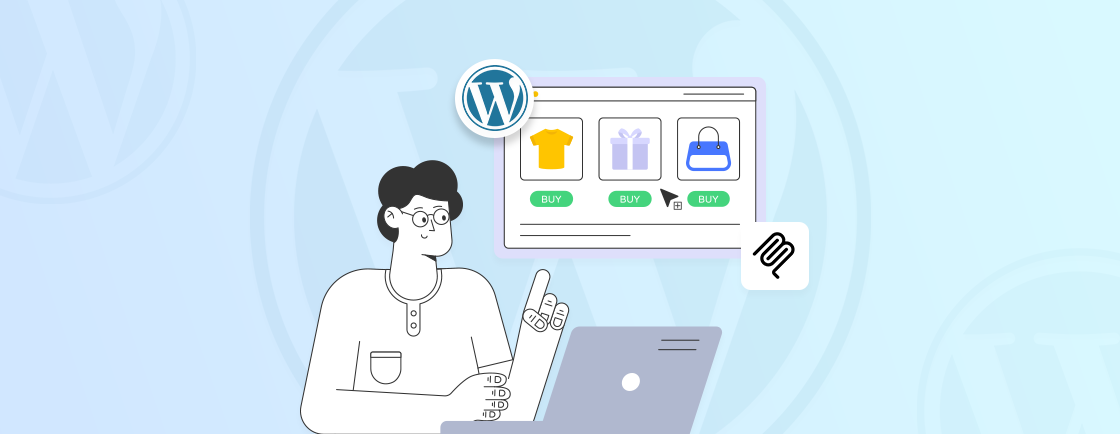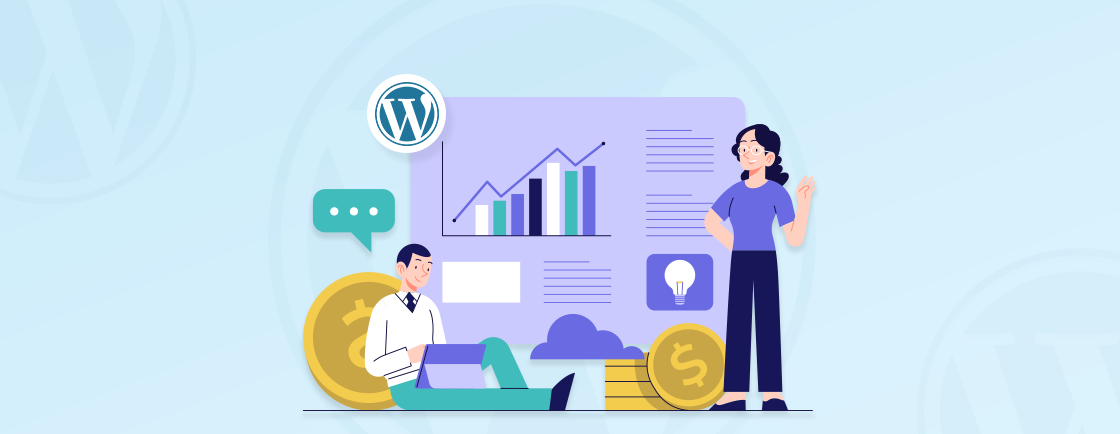Table of Contents
WordPress offers immense flexibility, allowing users to customize their websites beyond pre-built themes and plugins. Whether you want to adjust the design, enhance functionality, or troubleshoot issues, editing code can help tailor your site to meet specific needs.
Understanding how to modify theme files, plugins, and core WordPress settings is essential for making these changes safely. However, if you do edit code in WordPress, it will require caution to prevent common errors that could break your site.
In this blog, we’ll explore the different methods adopted by WordPress experts to edit code of the website. Plus, we’ll look at the best practices to consider for the optimum results. Let’s begin.
Why Edit Code in WordPress?
Every WordPress site is built on a foundation of core files, along with a theme and a variety of plugins that dictate its appearance and functionality. While many customization options exist through the dashboard, there are times when deeper modifications are necessary.
Customization Beyond Limits
Standard themes and plugins offer a wide range of options, but they often fall short of meeting specific design or functionality needs. Direct code editing allows for precise tailoring of your website’s appearance and behavior.
Enhanced Functionality
Adding custom features, modifying existing ones, or integrating third-party services often requires manipulating PHP, JavaScript, or other code elements.
Performance Optimization
Experienced users can optimize their website’s performance by fine-tuning code, such as minifying scripts or reducing HTTP requests.
Troubleshooting and Problem Solving
When encountering website issues or conflicts, understanding and editing code can be crucial for diagnosing and resolving problems.
Increased Control
Editing code gives the site owner far more control over the site, and less dependence on plugins that can become outdated.
While editing the code of a WordPress website is a great way to truly make it your own, it’s important to approach with caution. Consulting with the experts would be the best way forward.
How to Edit Code in WordPress Theme?
WordPress themes control your site’s appearance and layout. You can edit theme files to customize your website design. Here are a few ways.
Using the WordPress Theme Editor
While it’s not recommended, you can edit the code in a WordPress theme for minor or temporary adjustments. Here’s how.
Step 1: Log in to your WordPress admin dashboard.
Step 2: Navigate to Appearance > Theme File Editor.
Step 3: Select the file you want to edit (e.g., style.css, functions.php).
Step 4: Make changes and click ‘Update File’.
Caution: Direct edits to the parent theme are highly discouraged. Any mistake can break your site, and updates will overwrite your changes. And there is no version control. Meaning if you make a mistake, it can be hard to revert back to the previous working version.
Using a Child Theme (Recommended)
A child theme inherits the functionality and styling of the parent theme. So creating and using a child theme allows you to make modifications without altering the original files.
Step 1: Create a new folder in wp-content/themes/ (e.g., my-child-theme).
Step 2: Add a style.css file with the following header:
/*
Theme Name: My Child Theme
Template: parent-theme-folder-name
*/
Step 3: Add a functions.php file to enqueue the parent theme’s styles:
<?php
function my_child_theme_enqueue_styles() {
wp_enqueue_style('parent-style', get_template_directory_uri() . '/style.css');
}
add_action('wp_enqueue_scripts', 'my_child_theme_enqueue_styles');
Step 4: Activate the child theme in Appearance > Themes.
It’s always a smart choice to hire WordPress developers who recommend using child themes, ensuring the parent theme and its design remain intact while allowing safe customizations.
How to Edit Code in WordPress Plugins?
Editing WordPress plugin code can grant you very specific functionality, but it’s an area where extreme caution is advised. Here are two ways to go about it.
Using the Plugin Editor
Within your WordPress dashboard, navigate to ‘Plugins’ -> ‘Plugin Editor’. This provides direct access to the plugin’s code files.
But you need to understand that direct edits are highly discouraged. Any error can lead to plugin malfunction or complete site failure. And of course, plugin updates will overwrite your changes, losing all customizations.
Using a Custom Plugin (Preferred)
Instead of modifying the original plugin files, create a custom plugin or utilize a code snippets plugin to add or override functionality. Here’s how you go about this approach.
Step 1: Create a new folder in wp-content/plugins/ (e.g., my-custom-plugin), i.e. the WordPress content directory.
Step 2: Add a my-custom-plugin.php file:
<?php
/*
Plugin Name: My Custom Plugin
Description: Adds custom functionality.
Version: 1.0
Author: Your Name
*/
function custom_function() {
echo "Hello, this is a custom plugin!";
}
add_action('wp_footer', 'custom_function');
Step 3: Activate the plugin from the WordPress admin dashboard.
This approach adheres to best practices, ensuring your WordPress site remains stable and your customizations are preserved.
How to Edit WordPress Core Files?
Editing WordPress core files (wp-config.php, .htaccess, etc.) can be risky and should be avoided, unless necessary.
Common Core Files to Edit
- wp-config.php file: This file contains crucial WordPress configuration settings, including database credentials, security keys, and other constants.
- .htaccess file: This file controls server behavior, including URL rewrites, redirects, and security settings.
Editing wp-config.php File
Step 1: Connect to your server using an FTP client or using the hosting provider cPanel.
Step 2: Locate wp-config.php. This file is located in your WordPress installation’s root directory.
Step 3: Download a copy of wp-config.php to your local computer as a backup.
Step 4: Open the file in your code editor and make the necessary changes. Common edits include:
- Database credentials
- Security keys
- Enabling or disabling debugging
For example, to enable debugging mode, add this code snippet.
define('WP_DEBUG', true);
Step 5: Upload the modified wp-config.php file back to your server, overwriting the original.
Finally, visit your website to ensure that the changes have taken effect and that your site is functioning correctly.
Editing .htaccess File
Step 1: Connect to your server using an FTP client or using the hosting provider cPanel.
Step 2: Enable hidden files. Since .htaccess is a hidden file, you may need to enable the option to show hidden files in your FTP client or file manager.
Step 3: Locate .htaccess. This file is located in your WordPress installation’s root directory.
Step 4: Download a copy of .htaccess to your local computer as a backup.
Step 5: Open the file in your code editor and make the necessary changes. Common edits include:
- Setting up redirects (permanent and temporary)
- Blocking specific IP addresses
- Preventing directory browsing
- Enabling gzip compression
Step 6: Upload the modified .htaccess file back to your server, overwriting the original.
Finally, visit your website to ensure that the changes have taken effect and that your site is functioning correctly.
If you are unsure about any code edits, consult with our WordPress development company.
How to Edit WordPress Code Using FTP or File Manager?
Editing WordPress code via FTP (File Transfer Protocol) or a File Manager provides direct access to your website’s files, enabling powerful customization.
Via FTP Client
FTP (File Transfer Protocol) or SFTP (Secure File Transfer Protocol) allows you to connect to your server and transfer files between your computer and the server.
Step 1: Install and configure your FTP client. Enter your FTP/SFTP credentials to connect to your server.
Step 2: Locate the wp-content folder, which contains your themes, plugins, and uploads. Locate the root directory, which contains wp-config.php and .htaccess.
Step 3: Download a backup of the particular file to your computer.
Step 4: Open the downloaded file in a code editor. Make your changes and save the file.
Step 5: Upload the modified file back to the server, overwriting the original.
Visit your website to ensure that the changes have taken effect and that your site is functioning correctly.
Via File Manager
Step 1: Log in to your hosting cPanel.
Step 2: Open the file manager.
Step 3: Locate the wp-content folder or the root directory of your WordPress installation.
Step 4: Locate and edit the file. Some file managers provide a built-in code editor; otherwise, you may need to download, edit, and re-upload the file.
Step 5: Save the changes in the file manager’s editor or upload the modified file.
Finally, visit your website to ensure that the changes have taken effect.
Selecting the right approach depends on the complexity of your changes and your level of expertise. By following best practices, you can confidently edit WordPress code without compromising your site’s stability.
Best Practices for Editing WordPress Code
Making changes to WordPress code can significantly enhance your website’s design, functionality, and performance. However, even small errors in the code can cause serious issues, from broken layouts to site downtime.
To avoid these pitfalls, following best practices is essential. These best practices help maintain your site’s stability while giving you the freedom to customize it to your needs.
Always Use a Child Theme
For theme customizations, create and use a child theme. This isolates your changes, preventing them from being overwritten during parent theme updates.
Back Up Everything
Before any code edits, perform a full website backup, including both files and the database. This provides a safety net for restoring your site if errors occur.
Use a Staging Environment
Test code changes in a staging environment (a copy of your live site) before implementing them on your production website. This minimizes the risk of breaking your live site.
Employ a Code Editor
Use a dedicated code editor (e.g., VS Code, Sublime Text) with syntax highlighting and error checking. Avoid using basic text editors.
Understand WordPress Hooks and Filters
Utilize WordPress hooks and filters to modify functionality without directly altering core files or plugin code. This is the preferred method for extending WordPress.
Create Custom Plugins for Functionality Changes
For plugin modifications or custom functionality, create a separate custom plugin. This keeps your changes organized and prevents conflicts with plugin updates.
Version Control
If you are making extensive changes, use version control software like Git. This will allow you to track changes, and easily revert to previous versions.
Prioritize Code Snippets
For small code changes, use a code snippets plugin. This allows for easy management and toggling of custom code without the need for custom plugins for every small change.
Document Your Changes
Add comments to your code to explain the purpose of your modifications. This aids in future maintenance and troubleshooting.
Keep WordPress, Themes, and Plugins Updated
Keeping your WordPress installation, themes, and plugins up-to-date is crucial for security and performance. Before updating, always backup your website.
Following these best practices not only protects your website from unintended errors but also streamlines your development process.
Let’s Conclude
Customizing WordPress through code opens up endless possibilities for tailoring your website’s design and functionality. Whether you’re adjusting theme files, modifying plugins, or fine-tuning core settings, understanding the right methods and best practices is key to making safe and effective changes.
While direct code edits provide flexibility, they also come with risks, making it essential to use backups, child themes, and staging environments to prevent disruptions.
If you’re planning to customize your website through code editing and want to ensure everything runs smoothly, feel free to contact us today for expert WordPress support.
FAQs on Editing Code in WordPress
Can I edit WordPress code from the dashboard?
Yes, WordPress provides the Theme File Editor and Plugin File Editor under the Appearance and Plugins sections. However, making direct changes through these editors is risky and can break your site if errors occur.
What’s the best tool for editing WordPress code externally?
Using an FTP client like FileZilla or cPanel’s File Manager allows you to safely access and edit files. For actual coding, a text editor like VS Code or Sublime Text with syntax highlighting is recommended.
Can I edit WordPress code on a local server before applying changes?
Yes! Setting up a local development environment using XAMPP, MAMP, or Local by Flywheel allows you to test changes safely before deploying them to a live site.
What if I accidentally break my site while editing code?
If you can’t access the WordPress dashboard, use FTP or cPanel’s File Manager to undo your changes. If needed, restore your site from a backup to recover it quickly.
Create with WordPress CMS
Build flexible and scalable websites using WordPress's powerful content management system.





